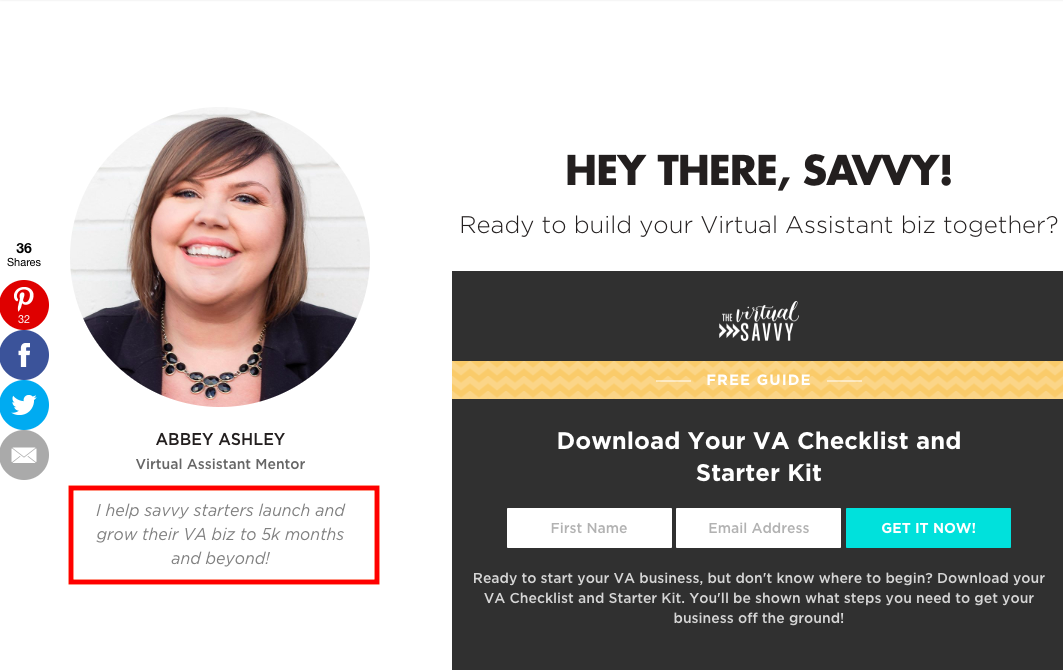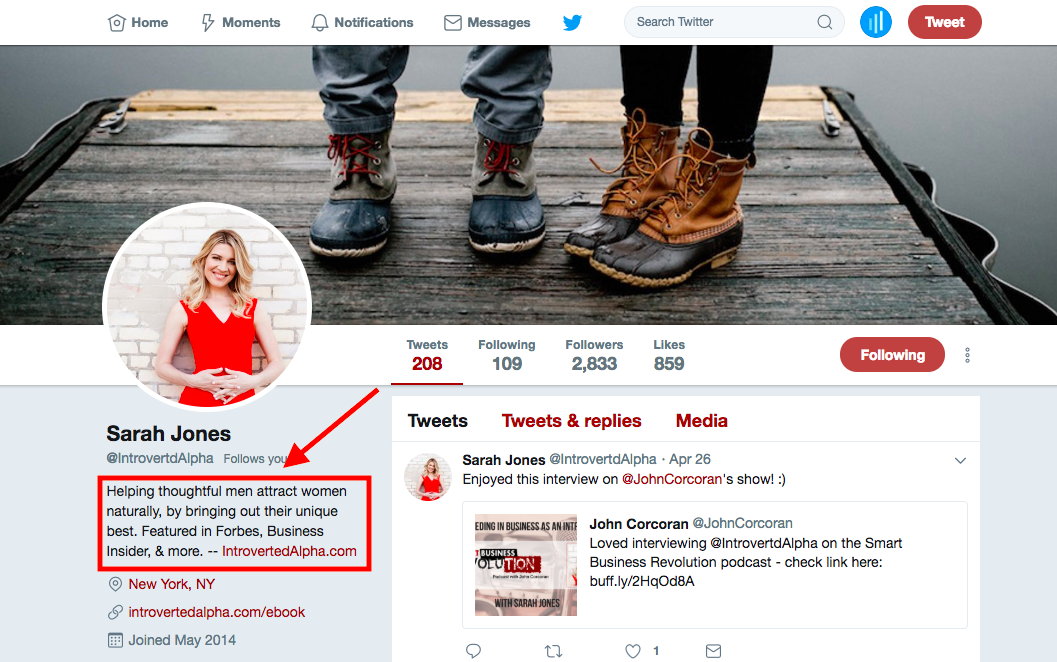
Creating a mission statement: 10 examples by real entrepreneurs
Your mission, should you choose to accept it, is to create a kickass mission statement for your business.
A mission statement that tells the world exactly what you do — and why they should care.
A mission statement that you roll out at networking events and conferences and immediately hear, “That’s so cool — tell me more.”
A mission statement that makes your dream customer stand up from their computer and scream, “YES, FINALLY. This is the company I’ve been looking for.”
Your mission statement is how your business would introduce itself at parties. Actually, it’s how YOU should introduce yourself at parties. And on your website. And on social media. Really, anywhere that you need a quick, one-sentence way to encapsulate your business’s reason for being in a single sentence.
And let’s face it: in a world that moves at the speed of scrolling, those situations come around more than once in a blue moon.
You want to have a mission statement ready. That way when you meet your dream customer on the subway, or you’re riding in an elevator with your dream affiliate partner, you’re ready to tell them:
- This is what I do
- This is who I do it for
- This is why it matters
Creating a mission statement: The three Ws
You may have heard of the five “Ws” of writing: Who, What, When, Where, and Why. They’re a framework used by journalists to make sure they’re communicating all of the important information about a story.
You can use a modified version of the same framework to make sure your mission statement communicates all the important information about your business.
Go ahead and drop the When (that’d be “when you buy my product”) and Where (that’d be “on my website”) and hone in on these three: Who, What, and Why.
- Who you help (that would be your Audience)
- What you help them do (that would be what your Product or Service does)
- Why what you do matters (that would be the Big Picture reason that your business exists in the first place)
Put them all together, and you get a skeleton that looks like this:
I help [WHO] do [WHAT] so that [WHY].
Fill it in Mad Libs–style with your own Who, What, and Why, and there you go — mission statement! (Okay, so there’s a little more to it than that.)
To give you a sense of what the finished product might look like, here are a few examples of mission statements created by real online entrepreneurs.
- “My mission is to help women in their 20s & 30s reclaim their hormonal health and feminine vitality naturally.” –Nicole Jardim
- “We help thoughtful men attract women naturally without being someone they’re not.” –Sarah Jones, Introverted Alpha
- “I help savvy starters launch and grow their VA biz to 5k months and beyond.” –Abbey Ashley, The Virtual Savvy
- “I help people heal their relationship with food & weight.” –Caroline Dooner, The Fuck It Diet
- “We help ambitious women conquer fitness anxiety and create lasting changes.” –Genevieve Malone, The Inertia Project
- “Workweek Lunch is a food blog dedicated to helping you save money by cooking more so you have more time and cash for the stuff you love to do.” –Talia Koren, Workweek Lunch
- “I will show you how to rewire your brain, process your stress without using food, and build a healthy relationship with food — so you can be a boss in the office and beast in the gym.” –Joe Nissim, Strengthlete
- “I help women all over the world feel more polished and confident through daily outfit tips, individual coaching, and events.” –Caitlin Skidmore, Greater Than Rubies
- “I help ambitious people belong to the best at what they do so they can count themselves to the leaders of their field.” –Allon Khakshouri
- “I help women entrepreneurs, founders, and freelancers design a maternity leave plan that meets their business model and personal needs.” –Ariana Taboada
A few things these mission statements have in common:
They’re short. Your mission statement isn’t the place to give customers your life story. Save that for the “About” page on your website. Put your mission statement to the social media test. If it’s too long to fit in your Twitter bio (around 160 characters), it’s too long to be your mission statement.
They’re focused on the big picture. It’s tempting to want your mission statement to cover everything your business does — online courses! Coaching! Blogging! But what if you don’t offer coaching six months from now?
What if your YouTube channel becomes a bigger part of your brand than your blog is? Your business can (and probably will) change over time. The reason (or “mission”) you run your business should stay the same — and that’s what your mission statement should reflect.
They’re unique. As you’re writing yours, ask yourself, could anybody say this about their business? If so, keep digging.
Want to build a business that enables you to live YOUR Rich Life? Get my FREE guide on finding your first profitable idea.
The “Who”: Define your audience (and get specific)
Some questions to ask yourself to help hone in exactly who your customers are and what ties them together:
- Are they men? Women? Both?
- How old are they?
- Where do they live?
- What’s their occupation?
- What are they interested in?
Here are a few examples of mission statements that get ultra-specific about who their target customer is:
- “My mission is to help women in their 20s & 30s reclaim their hormonal health and feminine vitality naturally.” –Nicole Jardim
- “I help women entrepreneurs, founders, and freelancers design a maternity leave plan that meets their business model and personal needs.” –Ariana Taboada
When you get this specific about who you’re for, your would-be customers don’t have to guess whether you’re “for” them. They’ll know, because you’ll either be describing them, or you won’t be.
The “What”: What do you help your customers do?
There’s an old copywriting saying that we love around the GrowthLab office: sell benefits, not features. Or, to use the snappier, rhyming version: “Features tell. Benefits sell.”
You don’t hire a personal trainer because you want them to kick the living crap out of you (although that may be the feature of the service they’re providing). You hire a personal trainer because you want to get in shape and get healthy. Those are the benefits.
How you identify the exact benefits that will resonate with the target audience you just identified above? At GrowthLab, we’re big believers in going directly to the source: your customers. (In fact, you should do this before you ever write a piece of sales copy or start building your product.)
Listen to your customers. That means interviewing them directly, but also noticing how they communicate on forums like Facebook groups or Reddit. How do they describe the problem they’re having? What exact words do they use when they talk about what they want?
Gather enough input from actual customers, and you’ll start to notice patterns — certain phrases and ideas coming up again and again. Pay attention to those recurring ideas. That’s where you’ll find the What statement that will get your customers’ attention.
Here’s an example of a benefits-driven mission statement from Zero to Launch student and Introverted Alpha founder Sarah Jones:
“We help thoughtful men attract women naturally without being someone they’re not.”
Sarah could have said, “We give men dating advice,” or “We coach men on their dating skills.” That would have covered the features of Introverted Alpha’s service.
But she digs deeper than that and gets to the benefits that men will receive as a result: attracting women naturally without being someone they’re not.
For Sarah’s target audience of men who want genuine, authentic dating advice and are running into nothing but Pickup Artist 101, that benefit is like a beautiful oasis in the middle of the desert.
Here’s another example, this one from The Virtual Savvy, run by Abbey Ashley:
“I help savvy starters launch and grow their VA biz to $5k months and beyond.”
The features-focused version of this would have said something like, “I teach aspiring virtual assistants how to get clients.” But Abbey breezes past that and gets right to the crux of the benefit that her audience wants.
Launch and grow to $5K months? If I’m trying to get my virtual assistant career off the ground, you’d better believe Abbey has my attention.
The “Why”: Why does what you do matter?
Framing what your business does in terms of benefits instead of features is a great step toward capturing the “Why” behind your business.
But, come on — this is your mission statement! Your articulation of your business’s reason for being! You can go bigger, and capture not just what your business helps your customers to do — but what that means for them (and for you).
Here’s an awesome example from Talia Koren, founder of Workweek Lunch:
“Workweek Lunch is a food blog dedicated to helping you save money by cooking more so you have more time and cash for the stuff you love to do.”
Talia covers the What first — “save money by cooking more.” (Notice that she doesn’t leave it at “I sell pre-made meal plans,” which would describe the features of her business.)
Then, she goes further. She goes right on to Why her audience wants to save money on food: so they have more money for the other things they want to do.
Getting clear on the why behind your business helps your audience understand why what you do matters to them. It also serves as a nice reminder for you of why you wanted to build this business in the first place.
Which, on those dark days when a launch falls flat, or a customer is mad at you, or a guest post just isn’t coming together the way you want to, is a nice reminder to have.
I wrote a mission statement. Now what?
Once you have the basics of your mission statement on paper, you’re ready to refine it, test it, and ship it — put it out there for the world to see!
Step 1: Refine it
Ah yes — everybody’s favorite part of every writing process: revisions!
Look at your Who. Can it be more specific? Can you get even clearer about who you serve?
Look at your What. Does it get to the core of the benefits that your business offers? Or is it hung up on features that you haven’t given your audience a reason to care about yet?
Finally, look at the Why. Does your mission statement make clear, beyond a shadow of a doubt, why the work that you do matters?
Step 2: Test it
Once you have a version that you think captures everything that you want to say, test it.
Send it to friends and fellow entrepreneurs and ask them, “Does this make sense to you?” Even better: put it to the Echo Test and ask people to echo how they understand what you’re saying.
If you have an audience already, maybe even send a survey with four or five different versions and ask them to choose — Which of these best captures your understanding of what we do?
Step 3: Ship it
When you have a version of your mission statement that you’re confident showcases the best of who you are and what you have to offer, put it out there for your customers and the world to see.
On your website:
On social media:
In your bio on your guest posts:
Your mission statement tells people the who, what, and why of your business. It’s copywriting in its most compact, distilled form.
But once you have your customers’ attention, you need to keep it. For that, you’re going to need all kinds of different kinds of copy: Landing pages, blog posts, emails, sales pages.
I don’t know if you’ve noticed, but writing for business is just a little bit different than writing five-paragraph essays for your high school English class. In school, writing was all about showing what you know. In business, it’s about getting attention and inspiring action.
Even non-writers can attract millions of avid readers and become more popular than “former editor of the school paper” types.
We’ve seen it happen. And we can show you how. Let us send you our free report, 5 Things They Didn’t Teach You in School About Writing. In it, you’ll learn:
- How to beat writer’s block. We’ve used these 4 simple strategies to create compelling blog posts for nearly a decade. These can single-handedly prevent your site from becoming another “side project” that “never took off.”
- The “creative on demand strategy” that pros use. Brian Koppelman, the screenwriter for Rounders, Ocean’s Thirteen, and The Illusionist, will share his strategy for producing great work when he’s just not feeling it.
- Why your teachers cared … but your readers won’t. Writing to please your teacher versus random readers on the web is a different ballgame. Teachers are paid to read your work. Readers aren’t. Luckily you can use a simple test before you hit publish to guarantee people will enjoy your work and come back for more.
- How to get people to read your emails. Emails are something everyone has to write, whether they like it or not. Might as well learn how to craft great ones. I’ll walk you through my most opened email of all time and show you WHY it worked — and how you can replicate its success.
- 5 things the highest paid writers in the world put in everything they write. The highest paid writers in the world aren’t authors or journalists — they’re copywriters. Use these 5 things to boost your sales overnight.
These are things that took us nearly a decade to learn. But you can breeze through the lessons and start applying them in one afternoon.
Like this blog post? Learn how to create amazing content like this that attracts and engages your target buyers with our FREE Ultimate Guide To Remarkable Content.
Host of Netflix’s “How To Get Rich” NYT Bestselling Author, & Host of the I Will Teach You To Be Rich Podcast. I’ll show you how to take control of your money with my proven strategies so you can live your RICH LIFE.
Written by Ramit Sethi
Host of Netflix’s “How To Get Rich” NYT Bestselling Author, & Host of the I Will Teach You To Be Rich Podcast. I’ll show you how to take control of your money with my proven strategies so you can live your RICH LIFE.



